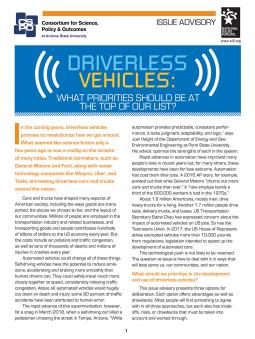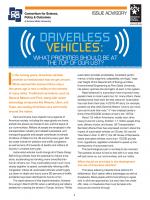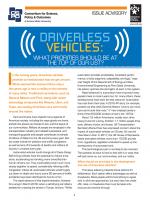What Priorities Should Be at the Top of Our List?
Scroll down for the Driverless Vehicles issue advisory and other related materials.
In the coming years, driverless vehicles promise to revolutionize how we get around. What seemed like science fiction only a
few years ago is now a reality on the streets of many cities. Traditional carmakers, such as General Motors and Ford, along with newer technology companies like Waymo, Uber, and Tesla, are testing driverless cars and trucks around the nation.
This technological push is not likely to be reversed. The question at issue is how to deal with it in ways that will best serve us, our communities, and our nation. What should we prioritize in the development and use of driverless vehicles?
This issue advisory presents three options for deliberation. Each option offers advantages as well as drawbacks. Most people will find something to agree with in all three approaches, but each also has trade- offs, risks, or drawbacks that must be taken into account and worked through.
Option 1: Promote human control behind the wheel
This option calls for keeping humans behind the wheel of moving vehicles. Rather than attempting to completely control vehicles, autonomous driving features would focus on safety and convenience—including, for example, technologies that enable drivers to park automatically and avoid crashes.ion.
Option 2: Preserve jobs and expand employment
Automation has led to hundreds of thousands of unemployed workers in the past few decades. This option calls for slowing down the rush toward automation to prioritize consideration of the millions of American drivers and others who now earn their living in transportat
Option 3: Support development of driverless vehicles to improve safety and traffic on highways
We should encourage widespread testing of autonomous cars and trucks to ensure optimum safety of the new vehicles and increase people’s confidence in them.



